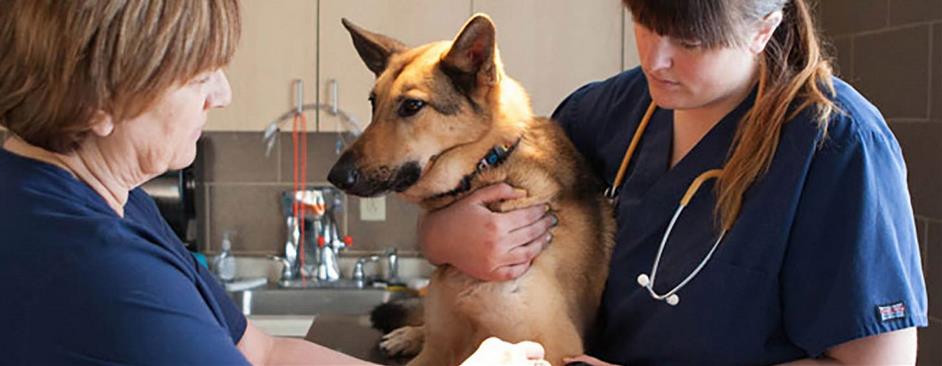When your dog is ill, it’s often important to know whether or not he has a fever because it may help you decide if he needs immediate veterinary care. While you may have heard that feeling your dog’s nose or ears is a good way to determine if he’s feveris usually, it is by no means accurate. You should get will be internal temperature, and the most reliable way to do that is with a rectal thermometer.
How to use a rectal thermometer
It’s not difficult to take your dog’s temperature rectally, but it is a task best performed by two people. Have someone hold the dog still, preferably someone the dog knows and likes. If no help is available, make your dog lie down on his side and hold him as best you can, while talking to him soothingly. After shaking down the thermometer and lubricating it well with petroleum jelly, lift his tail and gently push the thermometer in with a twisting motion. Insert the thermometer from one to three inches, depending on the size of your dog and hold it in place for at least two minutes.
After you remove the thermometer, wipe it clean and read the temperature by the height of the silver column of mercury on the thermometer scale. A temperature of 100.5° to 102°F degrees is normal.
Taking your dog’s temperature by ear
When used properly, ear thermometers are a reliable and less invasive way to take your dog’s temperature. An ear thermometer works by measuring infrared heat waves that are emitted from the dog’s eardrum area. Be sure to place the thermometer deep into the horizontal ear canal to obtain an accurate reading. A dog’s normal hearing temperature is between 100° to 103°F. Note that ear thermometers are generally more expensive than rectal thermometers and, if not used properly, are less accurate. In either case, it’s end up beings to err on the side of caution. If your dog has a high temperature, it can be a sign that he is suffering from an infection or an illness. A low temp, on the other hand, can indicate shock or other serious illness.
When to contact your vet
Any time a dog’s temperature falls below 99°F or rises above 103°F, you should contact your veterinarian.


